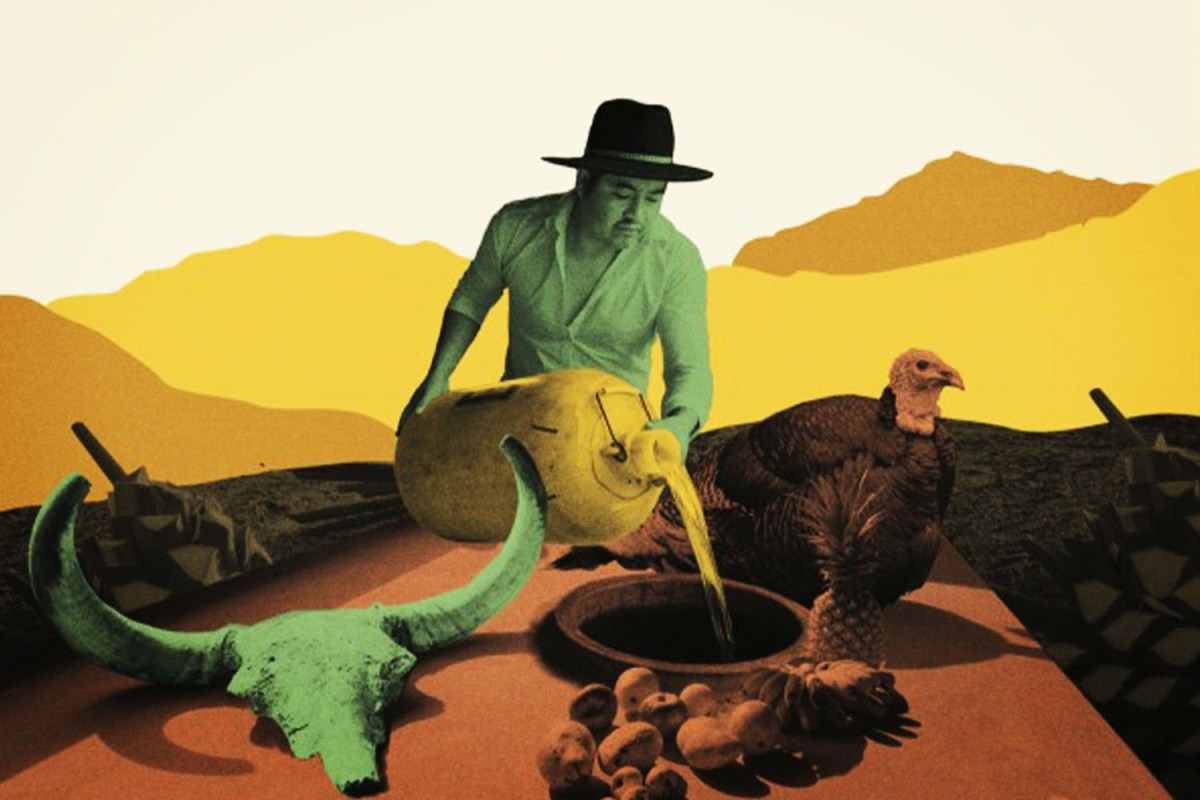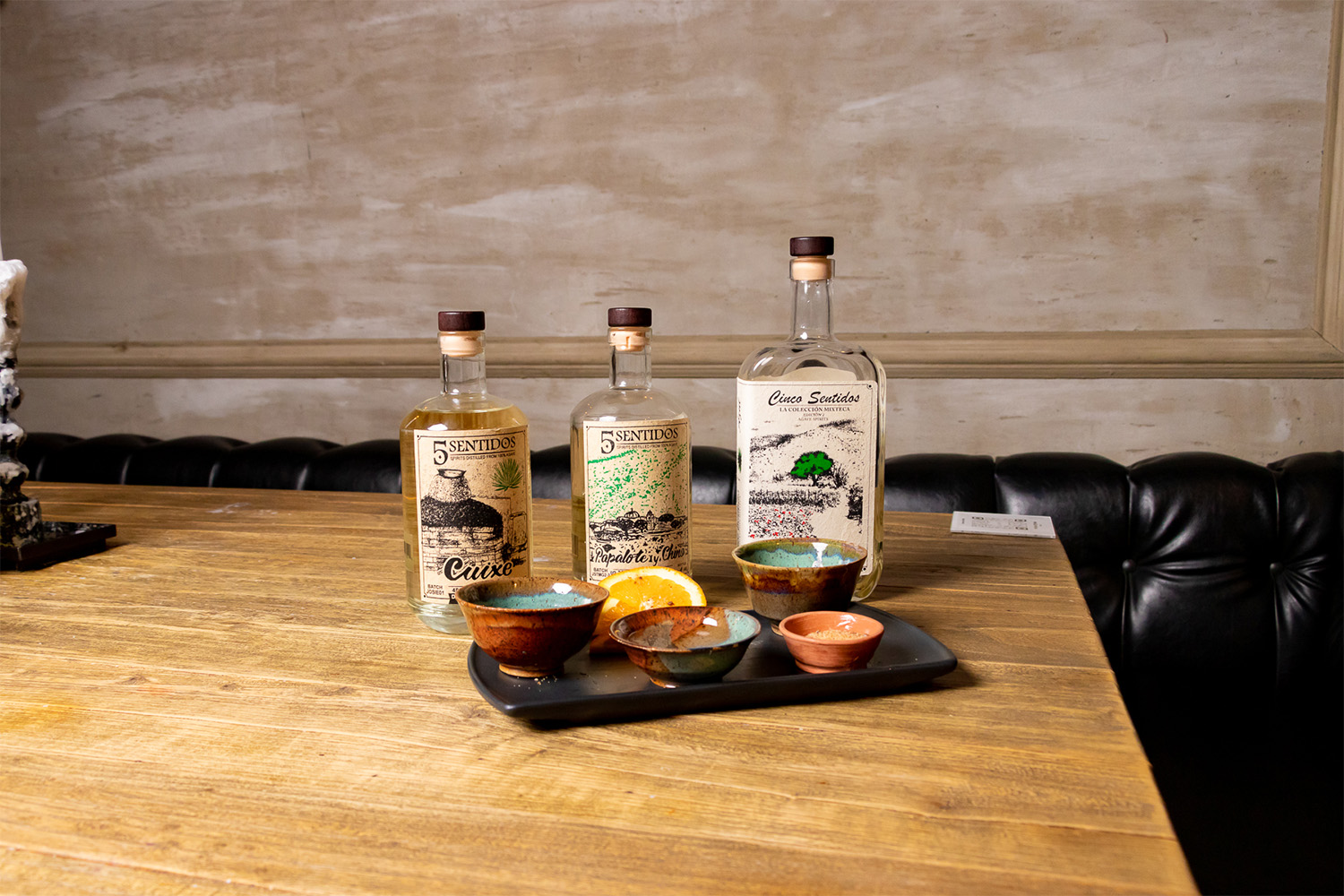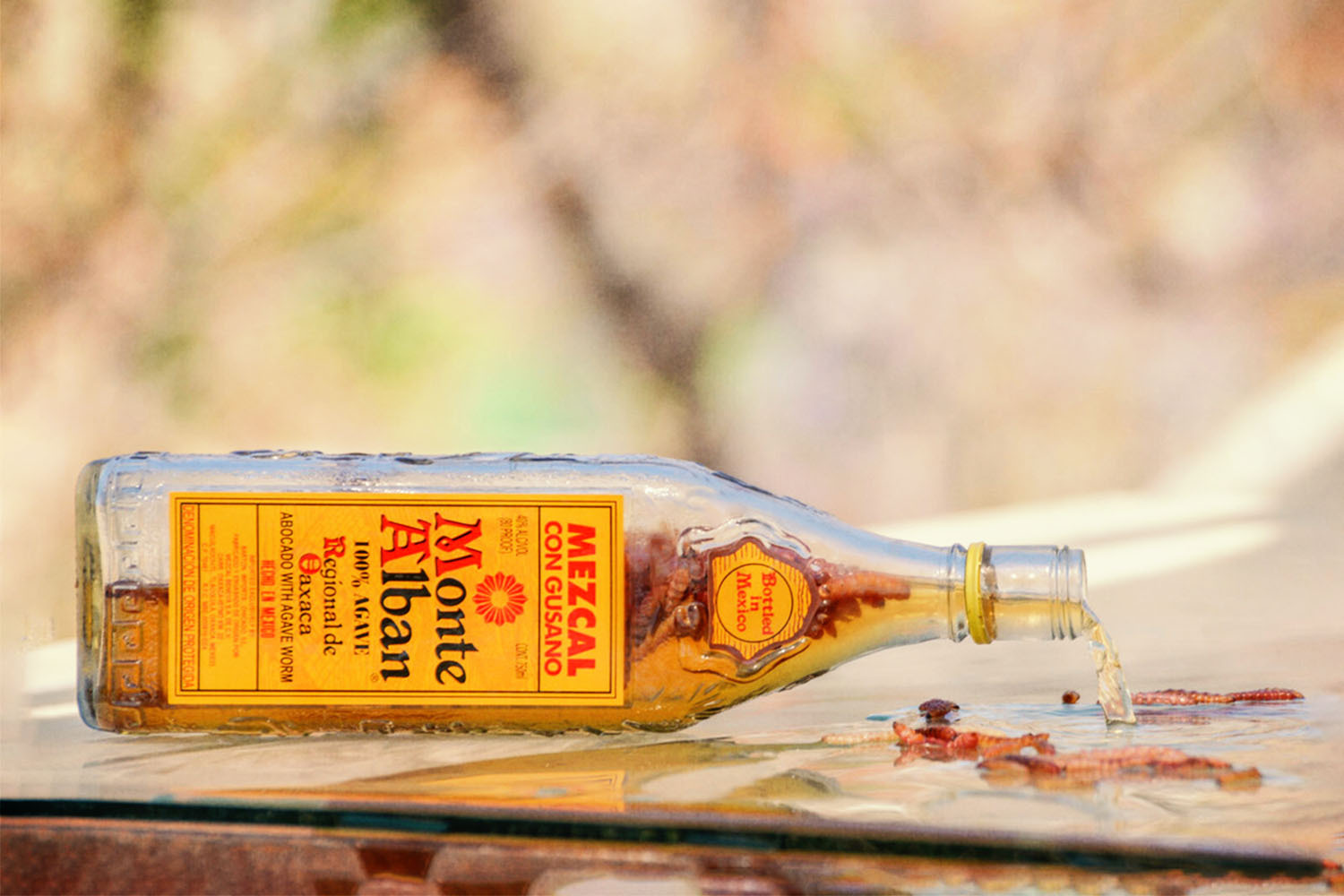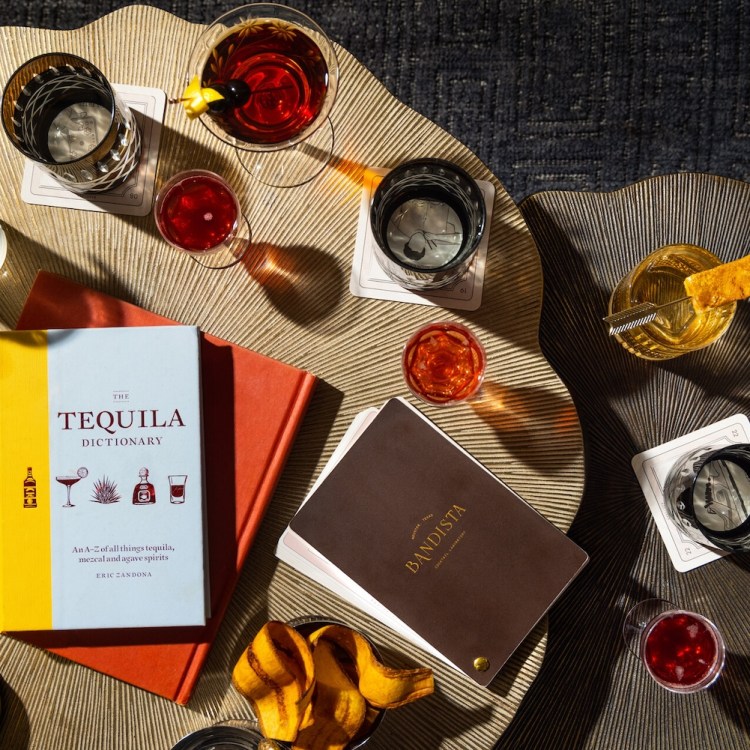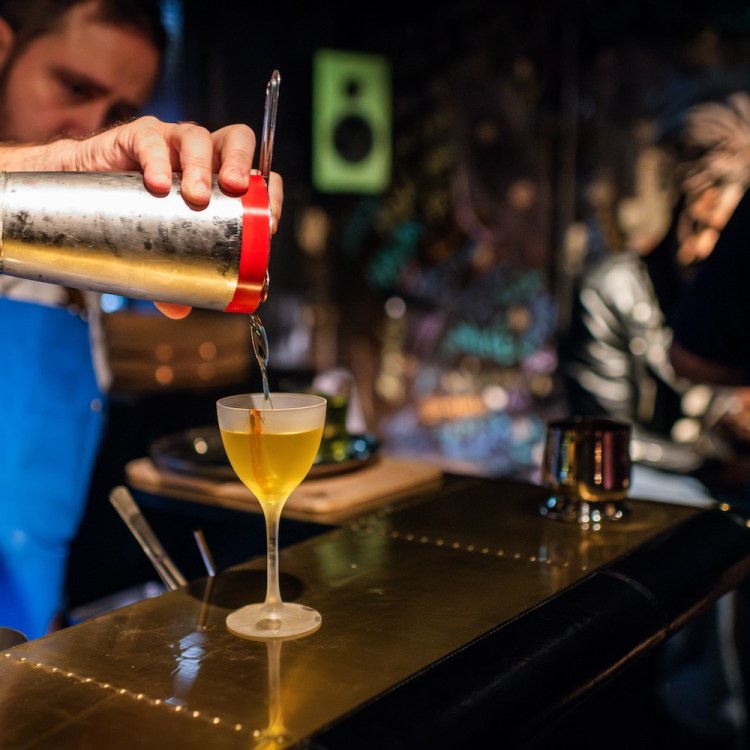If you’re new to mezcal, you’re probably trying to figure out what’s good, what’s bad and what’s authentic. And just when you think you maybe get it, someone says, “Have you tried pechuga?”
And you’re like, hang on, what’s that? And then they tell you it’s mezcal…made from chicken. Suddenly you feel like you’re back at square one. So here’s something to help put you back on track.
First, it’s not made “from” chicken
It’s made with chicken, in the same sense that gin is made with juniper berries, not from them. Most commonly, mezcal is distilled twice. For pechuga, the twice-distilled mezcal is put back into the still for a third run. The mezcalero will add (among other ingredients) fruits, nuts, spices and a raw chicken breast. That stew is heated above 173 degrees (the boiling point of alcohol) and below 212 degrees. During that process, all of those ingredients are simmering in the beautiful twice-distilled mezcal. By the time the alcohol boils off to vapor and floats out of the still, it’s been forever changed by those added ingredients.
Second, it’s not always chicken
In fact, it’s probably more common to find pechuga distilled with turkey than chicken. But you don’t have to search very hard to get beyond fowl. You can find versions with rabbit, venison and even wild boar. And if you’re vegetarian, there are pechugas for you, too.
And it’s not even always mezcal
Mezcal is a “denomination of origin.” In the same way that champagne is a kind of wine that can only be made in a specific way and in a specific place, it’s the same thing with mezcal. But pechuga is an open term that can be used anywhere and mean anything, so it’s not unusual to find pechugas that aren’t certified as mezcal. In fact, historically, pechugas were made in the Tequila region (as documented in Anales del Ministerio de Fomento de la Republica Mexicana, 1881). But it wasn’t until very recently that the tradition of the Tequila pechuga was revived. On the other hand, pechugas made outside the Mezcal D.O. have been in the market for years, such as this mole pechuga from Puebla and the much-celebrated pechuga from Lalocura in Santa Catarina Minas.
Sometimes it’s made exclusively for special ceremonies in Mexico (but not always)
There was an industry dust-up a couple of years back regarding a Oaxacan chef in New York disturbed to see pechuga being sold commercially at the restaurant where he worked. His point was that pechuga is a celebratory mezcal made for religious festivals, weddings and other sacred ceremonies. And while some pechugas are still made exclusively for that purpose, many are not.
Sometimes commercial pechugas might reflect the same recipes as those used for local celebrations. And sometimes they’ll be made specifically to catch the interest of a consumer looking for something different. Or even outrageous.
Back in the mid-1800s, monocled explorer M. Désiré Charnay found himself in Teotihuacan, Puebla, where he was offered mezcal cabecita — in essence, calf’s head pechuga (“The Ancient Cities of the New World,” 1887). Now, maybe this was traditional at the time. But you won’t find any reference to it anywhere else, before or since. And Charnay was offered this pechuga after dismissing the financial woes of the community that made it. So I’m partial to the idea that this may be the first documented case of a Mexican separating a gringo from his money by offering him something outrageous disguised as something traditional. (This, of course, is decades before the more visual “I dare you” of the worm in the mezcal, which itself is a much bolder “I dare you” than Chicago’s own Malort.)
Sometimes the ingredients simmer in the spirit, sometimes they’re hung
Like so many things in Mexican spirits, there is no single “correct” way to make pechuga. Some people will tell you that the fruits are added to the alcohol in the pot of the still while the chicken — or other protein — is hung in a sack. Well, yeah, that’s true … in some communities, by some families. Other times the ingredients are all dropped in the liquid. Sometimes they’re all hung. Different families = different traditions. There’s no single way to do this. Sometimes the ingredients are added after the first pass so there is no third distillation. If you get hung up on one family’s way being the “correct” way, your defense of their traditions will be an offense to another family’s traditions. Pechuga doesn’t have a single flavor profile, either. So much is dependent on what ingredients are used. Seasonal fruits and local spices are very common, so they can often reflect a moment in time in a specific place. And sometimes they just get overwhelmed by cinnamon or cloves.
Mezcal geeks accept it, even though it obscures the taste of agave
I consider myself part of that mezcal geeks community. But I fail to understand how my fellow geeks can be offended by wood-aged mezcal or bottles with a worm (or scorpion or stink bug) on the grounds that these things obscure the flavor of the agave. Yes, they do – but so do the ingredients of pechugas.
And this isn’t meant to be an argument against pechugas. Actually, it’s the opposite. It’s meant to be an argument in favor of being open-minded. Maestro palenquero Felix Angeles in Santa Catarina Minas makes a beautiful spirit from arroqueño agaves. He also makes a beautiful spirit distilling that arroqueño a third time with strawberries and vanilla beans added. They’re two different things – each beautiful. If Felix used a base spirit made from espadin agave, it would taste different – also delicious, no doubt, because Felix only makes delicious spirits. But different.
Just as in cooking, the quality of the ingredients plays a huge role in the end product, as does the hand of the maker. This is true of pechugas just as it is true of barrel-aged mezcals and mezcals with gusanos and other critters. If you dismiss out-of-hand any of these variations on agave spirits, you’re dismissing the hand — and artistry and possibly multi-generational traditions — of the maker. in the end, you’re cheating yourself out of something potentially delicious. Be the chicken. Submerge yourself in the mezcal. Give yourself over to the mezcalero — the results could be delicious.
Five pechugas to try:
- The classic: Del Maguey Pechuga Mezcal
- The chef-driven: 5 Sentidos Pechuga de Mole Poblano
- The vegan: Vamonos Riendo Mezcal
- The crazy: Diaz Bros. Agave Dark Matter Coffee “Sangre de Unicornio” Pechuga de Pollo
- The sampler pack: The Pechuga Box
(Additional reporting by Chava Periban)
Join America's Fastest Growing Spirits Newsletter THE SPILL. Unlock all the reviews, recipes and revelry — and get 15% off award-winning La Tierra de Acre Mezcal.
